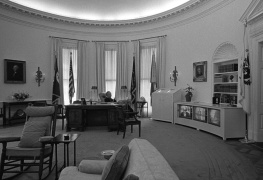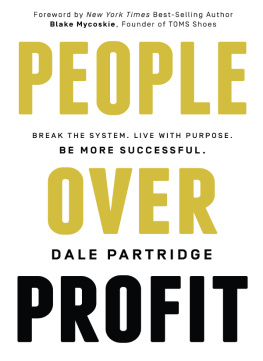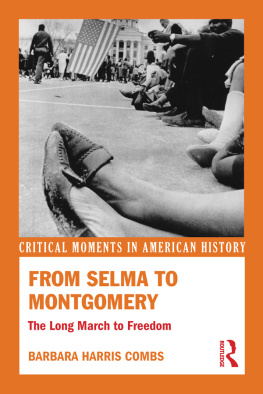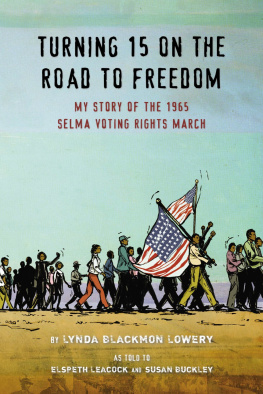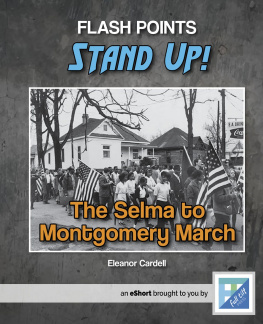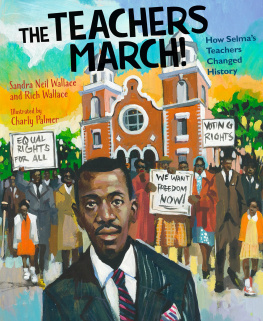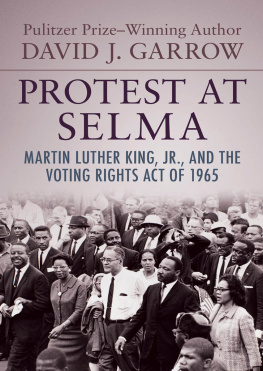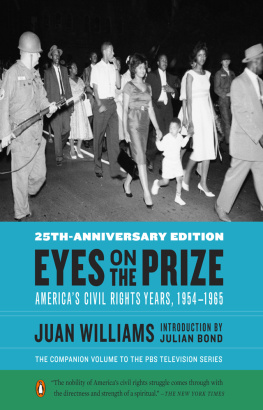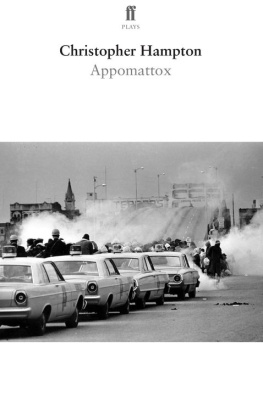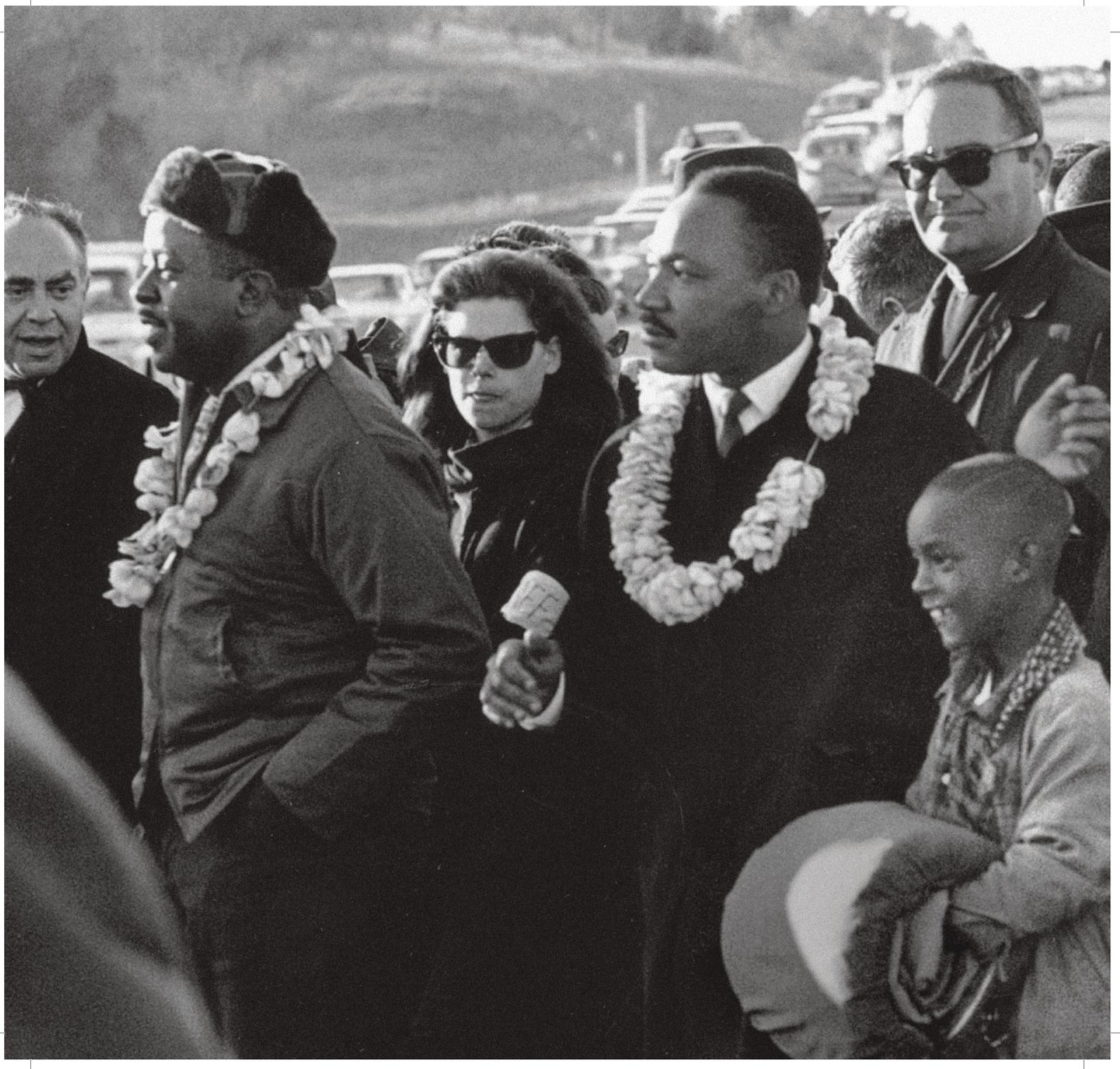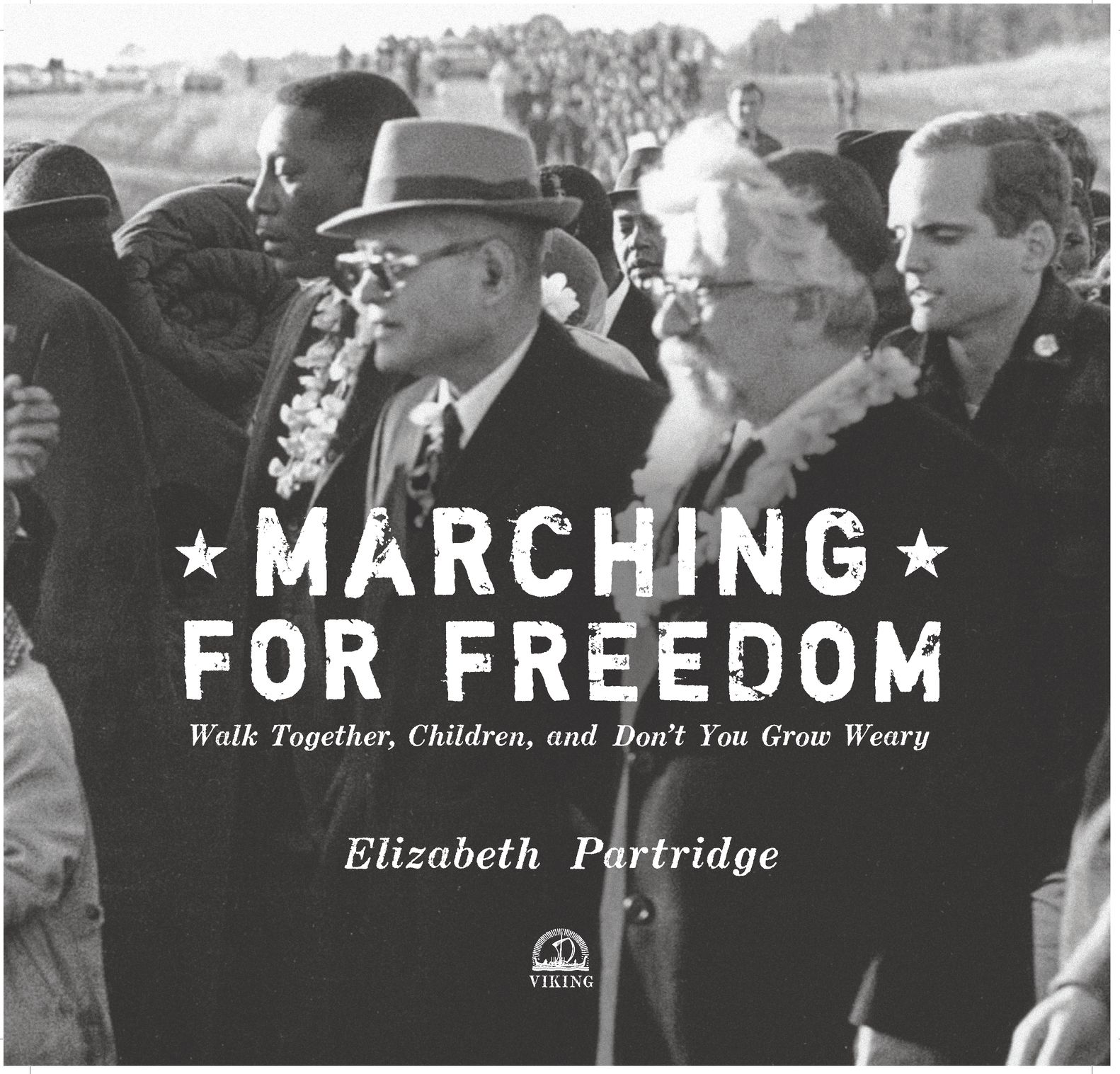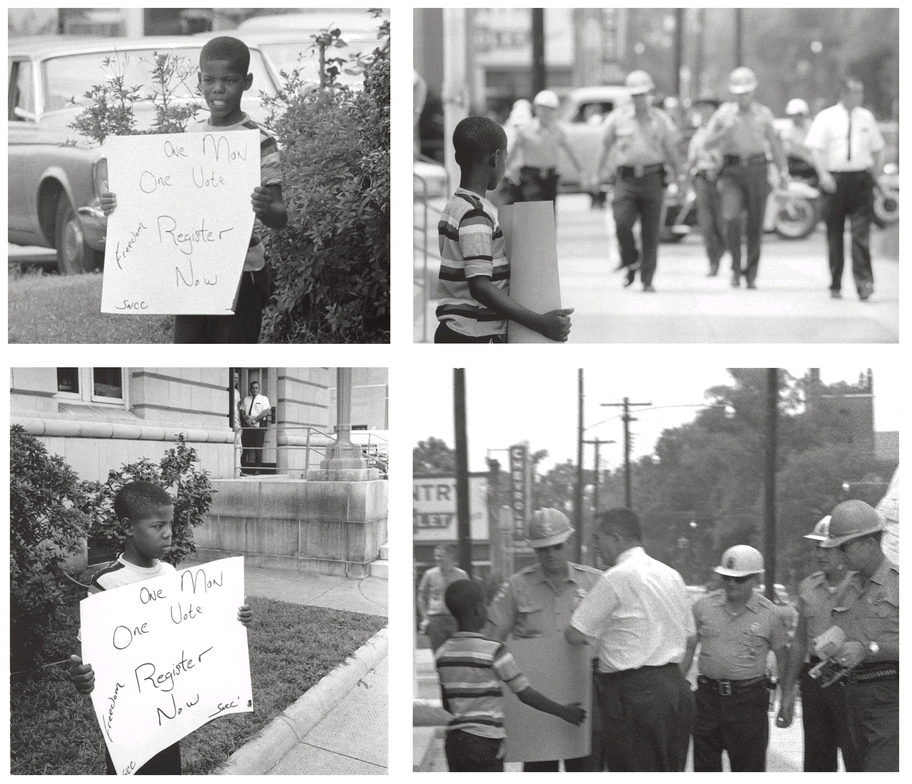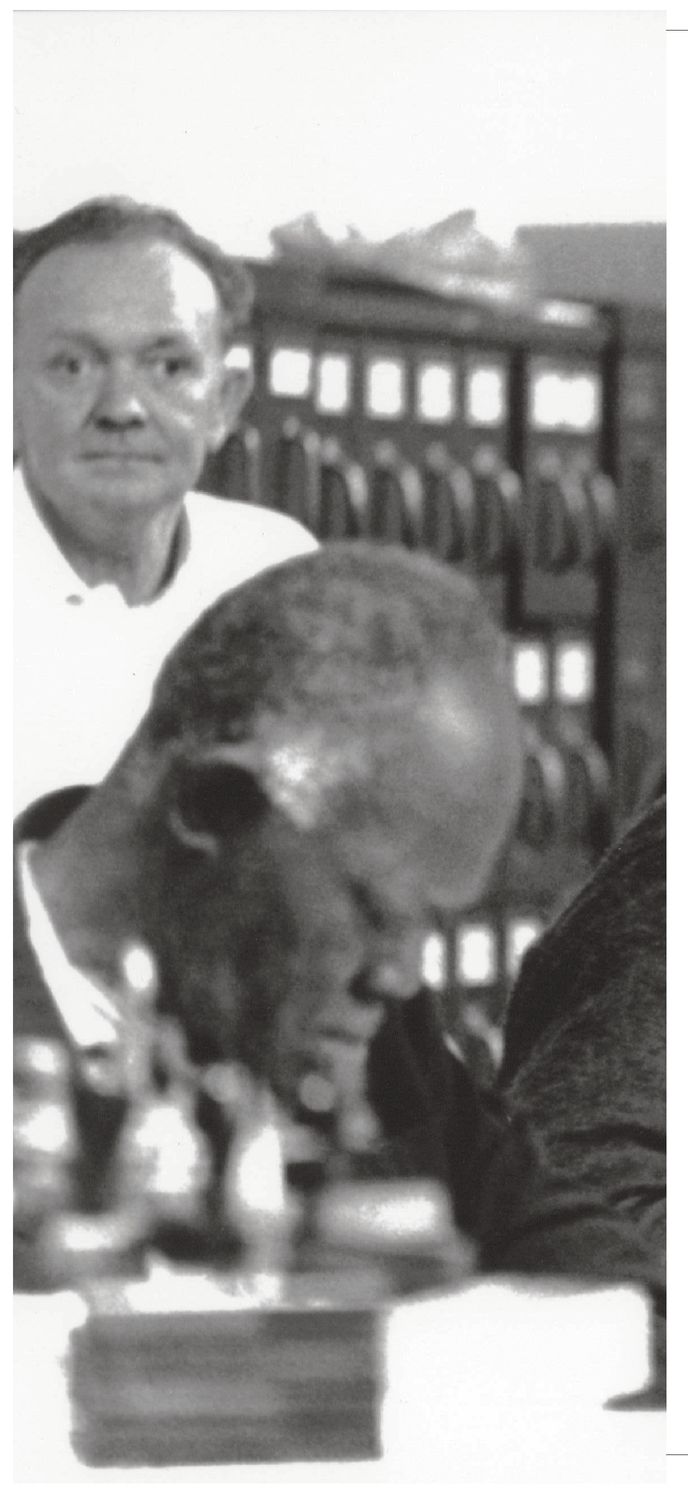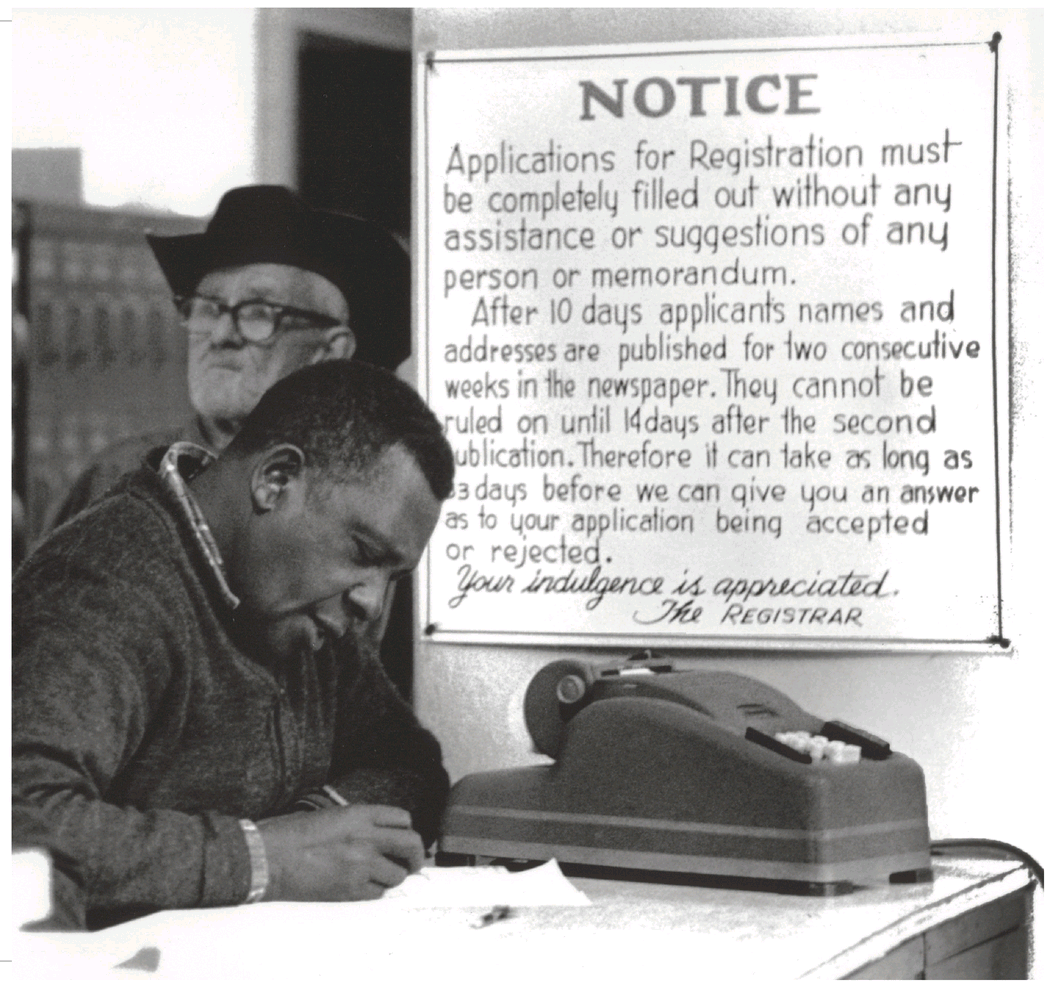Table of Contents
For my dad, Rondal Partridge,
who taught me the power of photography to bear witness.
Walk together, children,
Dont you grow weary
Sing together, children,
Dont you grow weary
Theres a great camp meeting
in the promised land
African American spiritual
often quoted by Dr. Martin Luther King Jr.
After the marchers victorious arrival in Montgomery,
Dr. Martin Luther King Jr. addresses the crowd, March 25, 1965.
Samuel Newall stands alone in front of the Dallas County Courthouse with his protest sign, July 8, 1964. Deputies arrested him.
VOTELESS, 1963
THE FIRST TIME Joanne Blackmon was arrested, she was just ten years old. After breakfast one morning, she and her grandmother, Sylvia Johnson, left their apartment in the Carver Homes in Selma, Alabama. Mrs. Johnson walked purposefully down Sylvan Street, turning onto Alabama Street for the six short blocks to the downtown shopping area. Mrs. Johnson intended to register to vote. She knew she wouldnt be allowed to. It was almost impossible for blacks to register. But she wanted to show the white authorities that she, like all Americans, deserved the right to vote.
At the corner of Lauderdale Street they came to the imposing Dallas County Courthouse. Just as they reached the top of the green marble steps, a white lady inside rushed to the glass door and slapped up a sign, CLOSED FOR LUNCH. She threw the lock shut, then stood glaring at them from the other side of the glass.
Joannes first reaction was surprise: she didnt know white people ate lunch so early. But Mrs. Johnson understood immediately what the sign and the woman meant. They werent welcome.
They didnt head back home, though. The courthouse allowed voter registration only two days a month, and Mrs. Johnson wasnt about to give up so easily. As they stood quietly outside the courthouse they were joined by other applicants, dressed in their Sunday best.
Hours crept slowly by. More people arrived, but the sign didnt come down. No one left the line to go to the bathroom or get a drink of water. Finally, two yellow school buses rumbled up, and the sheriff and his deputies ordered everyone on. Joanne was happy to climb up the deep stairs into the bus. Only white kids got to ride the school bus. Shed never been inside one. It wasnt until they pulled up in front of the city jail that she realized: they were all under arrest.
Over the next two years, Joanne would be jailed ten more times. Her sister Lynda, three years older, would be jailed nine times. They were just two of the hundreds of kids in Selma who met and sang and marched and were jailed over and over again in the struggle for a federal law ensuring every American the right to vote.
After Joanne and Lyndas mother died, their grandmother had moved in with their family. Accustomed to the freedoms up north where she had lived, Mrs. Johnson was angry about how blacks were treated in the South. She urged people to speak up when they were treated unjustly. After moving to Selma, she joined the Dallas County Voters League, a small group led by Amelia Boynton, struggling to get blacks registered. A vote-less people is a hopeless people, Mrs. Boynton said. Like only a small number of other African Americans, shed managed to get registered many years earlier. Now, she would prepare people to register, then go with them to the courthouse. All black applicants needed a registered voter to vouch that they were a good Negro. Few registered whites were willing to do it, so Mrs. Boynton would vouch for each person who applied.
Selma, the seat of Dallas County, had a population of 30,000 and was more than half black. But despite Mrs. Boyntons efforts, 99 percent of the voters were white. In nearby Lowndes County, blacks outnumbered whites almost four to one, but not one black had been registered to vote in sixty-five years.
Few dared to even try. The Alabama governor, George Wallace, made sure it was virtually impossible. He actively promoted use of an unfairly administered literacy test. Rigged for failure, the test was a series of unreasonable questions about the Constitution and obscure laws. While blacks sat struggling with the test, Mrs. Boynton watched whites walk in, register without being asked to take the test, and walk out ready to vote, without the officially required waiting period. Alabama was also one of five states that required an annual poll tax, which all votersblack and whitepaid each year just for being allowed to vote. To become a registered voter, applicants had to pay the accumulated total of back poll taxes owed for all the years since they were old enough to vote. Poor people simply couldnt afford to vote.
Information on applicants was published in the local newspaper to make sure employers and the Ku Klux Klan knew who dared try to register. Applicants were in danger of being fired, losing their homes, or even getting a nighttime visit from the Klan.
In 1963, Mrs. Boynton was joined by people from the Student Nonviolent Coordinating Committee, SNCC, or snick. They worked to register voters in Dallas County as well as adjoining counties, but hit huge resistance. Just for talking with Mrs. Boynton or SNCC workers, people could be fired from their jobs, beaten up, or run off the land they sharecropped. By late fall 1964, SNCC workers had only managed to increase the number of black voters in Dallas County from 156 to 335.
Widespread intimidation kept most blacks obeying the rules of segregation, unable to challenge unjust laws and customs. Fear is the key to it all, said Mrs. Boynton. Once we lose our fear, well be O.K. But how could they make a breakthrough? She strategized with the members of the Dallas County Voters League and came up with a plan. In December, Mrs. Boynton drove to Atlanta. She asked Dr. Martin Luther King Jr. and his organization, the Southern Christian Leadership Conference, or SCLC, for help. As a leader in the civil rights movement, Dr. King could bring three critical missing components to Selma: motivation, money, and the media.
Mrs. Boyntons timing was perfect. The Civil Rights Act, signed into law on July 2, 1964, by President Lyndon Johnson, had outlawed segregation in schools, work-places, and public areas such as restaurants and movie theaters. Now removing all barriers to the right to vote had become a top priority for the civil rights movement and SCLC. If we in the South can win the right to vote, said King, it will give us the concrete tool with which we ourselves can correct injustice.




